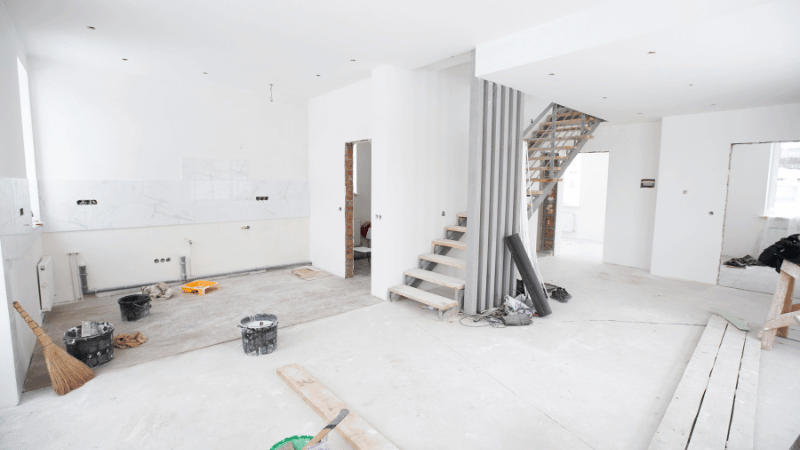Categories
What Deposit Do You Need For Bridging Finance?

Bridging finance is an important tool for flexible property purchasing, allowing you to move quickly in a vibrant marketplace, cutting through red tape to complete property purchases far more rapidly than with a mortgage.
You generally need at least a 20% deposit, or, 'equity', for a bridging loan. While you can use cash to provide this 20%, it's generally more common to use equity in another property.
With bridging finance, the equation is usually looked at from the perspective of 'loan to value' (LTV), rather than the deposit amount - this is your loan, calculated as a percentage of the property values (and cash if applicable) used as security. So, a 20% deposit would equate to 80% LTV.
One important consideration is that generally, the higher your LTV, the higher your interest rate will be - it's the driving factor behind the risk for the lender, and therefore the cost to you.
Get started with our calculator
Bridging Finance Basics
Bridging finance is a short-term property funding solution designed to provide rapid capital for property purchases or renovations, giving you the power to take advantage of opportunities. When you are looking to finalise contracts before being gazumped, maintain a property chain, or to flip a house bought at auction, bridging finance offers the flexibility you’re after.
To understand more about the basics of bridging finance, read our detailed Guide to Bridging Loans.
Key Takeaways
- Bridging finance can typically be obtained up to 80% loan-to-value (LTV).
- Bridging finance normally uses assets, such as property, as collateral.
- Deposits can be used to lower LTV but are not essential.
- Alternative non-property assets can form collateral with specialist lenders.
- Bridging finance structure is flexible regarding bad credit scores and affordability checks.
- Advice from a bridging expert broker is essential to get the best deals.
Lender Risk - The Core of Bridging Finance
Obtaining any sort of loan is all about presenting your position to a lender positively enough that they consider the deal a sensible balance of risk vs. reward. When dealing with the level of capital needed to purchase property, that evaluation is essential.
The bridging finance lender is a business, not your friend, and as such is going to determine whether it’s worthwhile lending you the money you’re after based on a few criteria:
- Return on Investment - Are we going to get back more money than we lend?
- Borrower Credibility - Can we trust that this person will pay back the money as they say?
- Security - If it all goes wrong, can we do something to get our money back?
Bridging Finance and Return on Investment
Because bridging finance offers so much in terms of power and flexibility, it is relatively expensive. It is designed as a short-term solution where costs won’t spiral out of control simply because it’s paid back before they do.
For lenders to get a worthwhile return on investment, they look at:
- Interest
- Fees
These two components ensure that you pay back more for your bridging finance than you borrowed. To learn more about the cost of bridging finance, read our detailed article.
Bridging Finance and Borrower Credibility
Most loans, including mortgages, are very focused on the borrower and how much they can be trusted to pay back the debt. Bridging finance however, is structured a little differently. Rather than having monthly repayments with the capital being repaid slowly over many months or years, it’s developed as short-term borrowing that is paid back in full once a pre-defined condition is met. This is known as the exit strategy.
Bridging finance exit strategies are normally one of:

Alternative financing is put in place to repay the bridging finance.

The property bought with the bridging finance is sold for profit, repaying the debt.

Another property (typically your old house) is sold, the proceeds of which repay the bridging finance.
Bridging Finance and Security
Loan security is called several things, including collateral, security, and guarantee. For many types of finance, collateral is a backup plan to be called on only when things go wrong, but with bridging finance it forms the pillar around which the whole structure is based.
The value of the assets (the collateral) must always exceed the size of the bridging finance to ensure that the debt is property secured. If the bridging finance isn’t repaid in full as agreed as the exit strategy, these assets can be sold and the proceeds used to cover the debt.
This allows bridging finance to place far less emphasis on your credit history, income, and affordability tests. While those things are still considered, they become the backup plan, with the security at the forefront.
Bridging Finance Loan-to-Value
Loan to value (LTV) is calculated as a percentage ratio between the amount to be borrowed against the value of the collateral (amount / collateral x 100). For example, a £300,000 loan secured against £500,000 of assets is described as 60% LTV (300,000 / 500,000 x 100). Finance of £400,000 secured against £1 million collateral is 40% LTV (400,000 / 1,000,000 x 100).
High LTV is:
- Higher Risk - If the assets need to be sold, they may not meet the full cost of the debt including fees and administration costs of making the sale.
- More Expensive - To make it worth the risk, the lender will increase interest rates and potentially, fees.
- Less Competitive - Fewer lenders want to take on the risk, so there’s less competition driving down interest and fees.
- Harder to Obtain - With fewer lenders offering the product, it’s harder to find a suitable lender.
- More Likely to Consider Credit Score - With the collateral not quite strong enough to secure the finance alone, lenders look to other forms of security including evaluating borrower credibility.
Conversely, lower LTV is:
Bridging Finance Deposits - Lowering LTV
When you apply for a mortgage, the term used to offset LTV is 'deposit’. This typically represents cash you’ve saved toward the purchase. For example, if you are looking to buy a property valued at £300,000 and you have saved £45,000 in cash, this is seen as a 15% deposit (as £45,000 is 15% of £300,000).
A more lender-friendly way to consider this figure is to see it as offsetting the LTV. In the previous example, your 15% deposit means the lender only needs to provide 85% of the property value to give you the capital you need to buy the house. The LTV is 85%
Deposits can be used for bridging finance as easily as they can with mortgages. If you are offered an 80% LTV bridging finance option and the property you want to buy is £400,000 then the finance represents £320,000, leaving you to find the remaining £80,000 yourself.
However, deposits are not the only way to lower LTV - nor are they the most common.
Watch our bridging loan case study below for another bridging deposit example:
Lowering LTV Through Assets
As seen earlier, LTV is calculated based on the value of the collateral against the total borrowing. For bridging finance, increasing the pool of assets to lower LTV is a common method of providing the needed security.
Lowering LTV When Moving House
One of the most common reasons for a bridging finance is because you are moving from an old property to a new one. Bridging is used for its speed, allowing you to complete the contract on the new home before you’ve sold the old one - perhaps to avoid the problems of a property chain, or because you want to get everything done as quickly as possible to prevent gazumping.
In these situations, you have two strong assets, not just one:
- The property you are moving from (your old house)
- The property you are moving to (your new house)
Because the bridging finance is put in place before you’ve sold your old house, and because it will be used to buy a new one, you own both at the same time. Plus, because the exit strategy for the bridging loan occurs once you sold the old house, you will always own both while the bridging loan is in place.
Lowering LTV With Other Properties
As long as you own other properties, these can also be used as part of your bridging finance collateral. They might be second homes, or properties you rent out as a landlord. Just as with a house you are moving out of, the other property values can be taken into account to create a blended LTV.
Lowering LTV With Other Assets
While property makes up the vast majority of assets used for bridging finance, some specialist lenders will be happy to consider other high value assets when calculating LTV. These may include:
- Land
- Vehicles
- Business assets
- Specialist machinery or equipment
- High value collections
Clifton Private Finance can help if you are looking to secure bridging finance to buy a property using a variety of assets. Our team have the expertise needed to match you to specialist lenders able to properly value and include alternative assets.
Equity - Properly Calculating Asset Value
When looking at property and other assets to calculate LTV, it’s important to understand that only the equity in the property can be used to calculate the asset value as collateral. Equity equals the amount of the asset you own and that isn’t already leveraged as security against other debt.
The primary example of this is with an existing mortgage. Only the value of your property once the mortgage is deducted (the equity) is the level of collateral it represents. For example, a property valued at £420,000 with an existing mortgage with £310,000 balance - equity equals £110,000 that can be used for LTV calculations.
Asset Equity Values
|
Asset |
Existing Secured Debt |
Equity |
|
House worth £650,000 |
£400,000 mortgage |
£250,000 |
|
House worth £450,000 |
£210,000 mortgage and £30,000 homeowner loan |
£210,000 |
|
Flat worth £275,000 |
None |
£275,000 |
|
Car worth £42,000 |
Hire purchase with £8,000 balance |
£34,000* |
|
Whisky collection worth £18,000 |
None |
£18,000* |
* non-property assets require specialist lenders
Note that when buying a property with bridging finance, your equity in that property will be 100% and thus, the entire property value is included in the LTV calculation.
Bridging Finance LTVs
The LTV offer you obtain for your bridging finance will depend on several factors:

The value of any cash deposit - While asset-based securities used as collateral are typical for bridging finance, cash deposits show the strongest investment and significantly lower risk, improving your LTV and lowering rates.

The quality of assets used for collateral - Property is typically expected as collateral, though specialist lenders are able to consider non-standard assets. These alternative assets may result in a slightly different LTV calculation, for example, the maximum LTV for vehicle-based collateral may be 10% to 20% lower than with property as collateral.

The strength of your exit strategy - All exit strategies have a measure of risk, for example ‘will the property sell in time’, or ‘will I get the mortgage I expect’. Less risky exit strategies will result in higher LTV bridging finance offers.

Your financial profile - While bridging finance does look more at securities than personal credit history, it is still a consideration and may affect LTV.

The current market - The national economy and lending landscape will affect the LTVs on offer. This means timing may make a difference when applying for bridging finance.

The lender - Each lender will assess applications differently. You should get a range of finance offers and evaluate each.

Your broker - Working with a professional broker is essential to obtaining bridging finance. Speak to Clifton Private Finance to give yourself the best chance of a high LTV loan with low interest rates.
What LTV Can I Get with Clifton Private Finance?
Most UK bridging finance lenders will offer LTVs between 60% and 80% LTV. At Clifton Private Finance our bridging team have established relationships with the many specialist bridging finance lenders offering property finance in the UK. We will work on your behalf, supporting you throughout the whole process to get the best bridging finance deal possible.
Speak to a Clifton Private Finance advisor now and discover the power of property-driven bridging finance.
Get started with our calculator











